Embracing wilderness living rekindles a profound connection with our ancestors, demanding a blend of survival acumen, deep appreciation for nature, and an unwavering spirit of self-reliance. The challenges are formidable, testing the limits of human endurance and ingenuity, yet the rewards—unparalleled tranquility, the raw beauty of untamed landscapes, and a sense of unbreakable bond with the earth—are immeasurable.
Mastering wilderness skills is not merely a nod to our past; it’s vital to unlocking a more resilient and harmonious self. Studies have shown that interaction with nature can lead to significant health benefits, including stress reduction and improved mood. So, are you ready to explore the essential skills for thriving in the great outdoors?
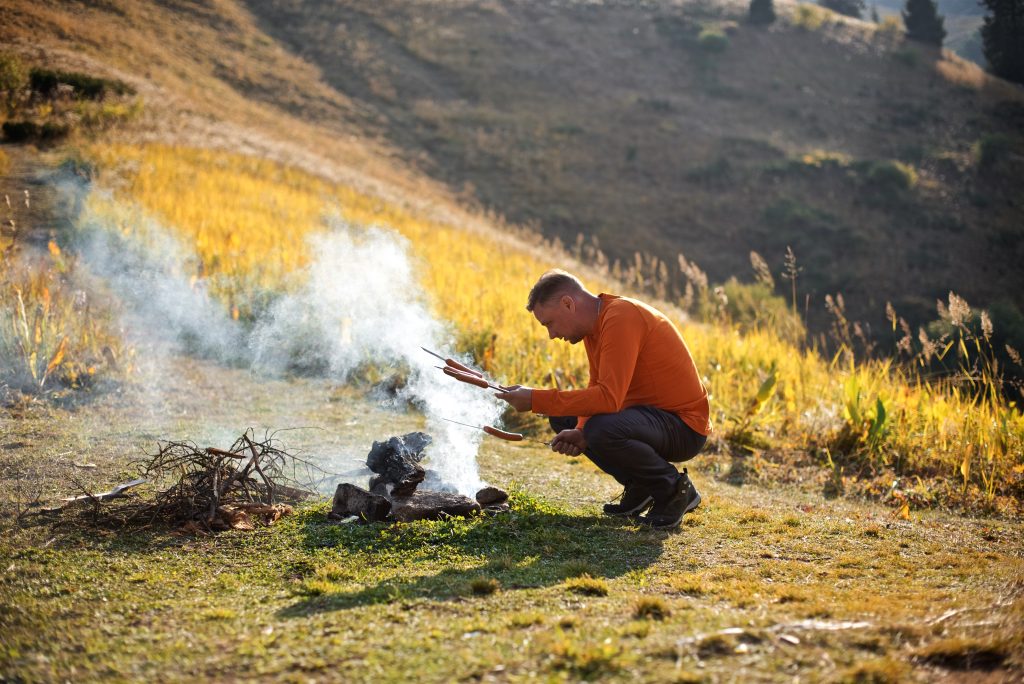
1. Fire Starting
Amid the unforgiving embrace of the wilderness, the ability to start a fire is akin to holding a lifeline. This essential wilderness skill not only wards off the chill of the night but also signals your presence, deters wildlife, purifies water, and transforms raw bounty into nourishing meals. Let’s ignite our understanding of this fundamental survival skill:
- Primitive Techniques: Mastering the art of fire-starting without modern conveniences draws us closer to our ancestral roots. The hand-drill and bow-drill methods, employing nothing but wood, friction, and sheer determination, exemplify human ingenuity. Likewise, striking flint and steel together harkens back to earlier times when these materials were prized for their spark.
- Modern Aids: For those of us less inclined to traditional methods, carrying waterproof matches or a lighter can be a lifesaver. These tools provide a bridge between ancestral knowledge and modern convenience, ensuring we’re never left in the cold.
The glow of fire represents more than just physical warmth; it’s a beacon of hope, a barrier against the unknown, and a hub around which stories and camaraderie flourish under the starlit sky. Whether you’re a budding survivalist or an experienced wilderness navigator, mastering fire starting is non-negotiable.
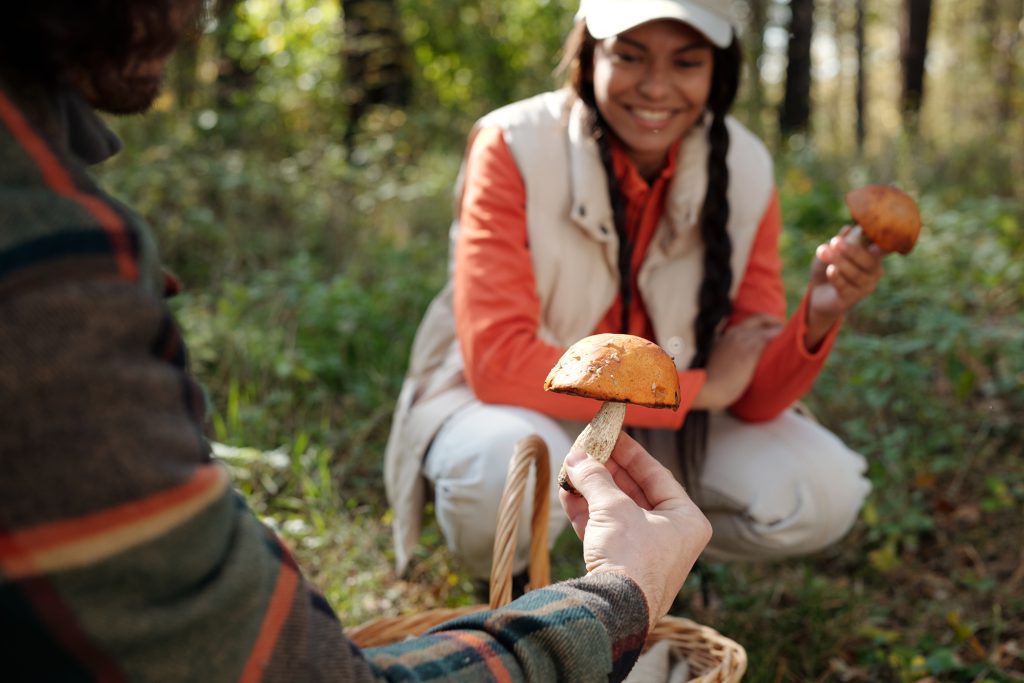
2. Foraging for Food
While seemingly stark, the wilderness teems with potential sustenance. The wilderness skill foraging invites an intimate understanding of local flora and fauna, an exploration that sustains the body and spirit. Despite the abundance the wilderness offers, one must remember the adage: when in doubt, leave it out.
Foraging isn’t merely grabbing at the nearest foliage; it’s a cautious dance with nature, calling for proper identification and respect for potential hazards:
- Edible Plants: While the green world around us seems lush and abundant, not every leaf or berry is a ticket to survival. Familiarize yourself with common universal edibles such as dandelion, cattail, clover, and purslane.
- Insect Delights: Not for the faint-hearted, but insects like grubs, earthworms, and termites are rich in protein and widely available.
Approach foraging with the reverence it deserves—nature is the provider but also the judge. Consuming the wrong plant or bug can swiftly turn a wilderness adventure into a desperate fight for survival. Equip yourself with knowledge, tread lightly, and let the wilderness nourish you, just as it has for our ancestors for millennia.
3. Water Purification
Water is the drumbeat of life in the wilderness—vital yet potentially voracious in its ability to harbor unseen dangers. Quenching your thirst straight from a pristine mountain stream may seem appealing, but the repercussions of untreated water can be severe. Intestinal turmoil from pathogens like Giardia can incapacitate even the hardiest survivalist.
Purify your lifeline. Here’s how:
- Boiling: Decimate microbes by bringing water to a rolling boil for at least one minute, a bit longer at higher altitudes. It’s the simplest method, requiring only heat and patience.
- Purification Tablets: Compact and convenient, chemical tablets such as iodine or chlorine dioxide can neutralize most pathogens, though be mindful of the waiting period before drinking.
- Portable Filters: A mesh of technology and convenience, portable filters strain out bacteria and protozoa, and some even tackle viruses, making them indispensable tools in your survival arsenal.
Remember, crystal clear water can be deceptive, harboring agents of disease and discomfort. Smart purification isn’t optional—it’s critical. Bear the weight of knowledge rather than the burden of illness. Stay vigilant with each sip, and let the streams and rivers be your sustaining force, not a source of regret.
4. Shelter Building
Another wilderness skill is shelter building. Shelter is your personal fortress in the wild, a haven against the harsh elements that nature can unleash. Whether it’s the relentless sun, piercing wind, or the bone-chilling cold, a well-crafted shelter makes the difference between thriving and barely surviving.
Building a refuge is more about wits than brawn:
- Lean-to: The lean-to is the bread and butter of survival shelters – just timber and foliage angled to shield you from wind and rain.
- Snow Cave: In snowy realms, the snow cave reigns supreme. Its frosty walls insulate against the winter’s bite.
- Debris Hut: When time is of the essence, the debris hut—a cocoon of branches and leaves—can be your quickest ticket to safety.
Here’s what counts in any shelter:
- Dryness: Moisture is a cold night’s companion. Your shelter must repel water like a duck’s back.
- Warmth: Insulation is key. Layer the walls with leaves, boughs, or snow, trapping heat like a thermal blanket.
- Comfort: You’ll need rest to face tomorrow’s challenges. A flatbed and a roof high enough to sit up under means the difference between a crick in your neck and a good night’s sleep.
Facing down the wilderness without a roof is a roll of the dice. Think like the elements; outsmart the weather. Your survival may depend on it.
5. Hunting and Trapping
In the vast theater of wilderness, the hunt is the primal play that has been performed since the dawn of time, with survival as the ultimate prize. It’s not mere conquest but rather an exercise in understanding and respect for the local fauna.
Hunting and trapping call for methodical precision and almost meditative patience:
- Hunting: Armed with a homemade bow, slingshot, or perhaps a spear, hunters must navigate the wilderness quietly, mimicking the stealth and cunning of a predator.
- Trapping: Snares and traps offer a passive approach to food procurement, working silently while you attend to other survival essentials.
Yet, the wilderness is not a limitless pantry:
- Wildlife Acumen: Understanding animal behavior is crucial to avoid futile chases and wasted energy.
- Ethics: Respect for the life you take is paramount. Hunting and trapping should focus on smaller game, minimizing ecological impact and ensuring a swift, humane kill.
So, stare deep into the wilderness, your grocery store under the sky. Decipher tracks, interpret signs and master patience. Be a visitor and a player in this grand spectacle of life with hunting and trapping. Be primal, respectful, and smart. After all, survival is the game.
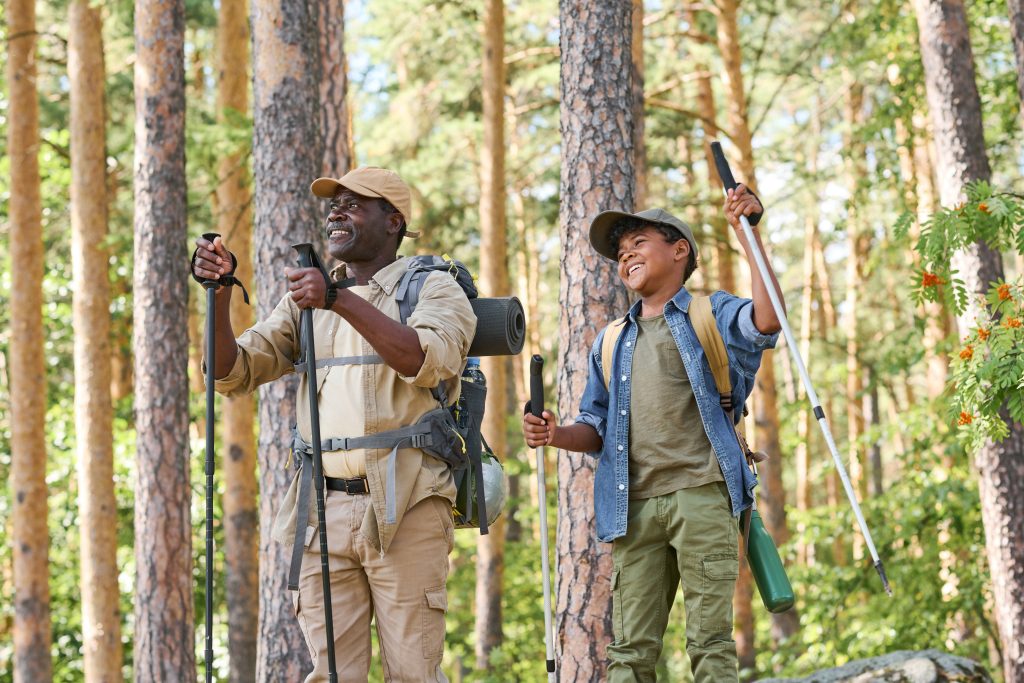
6. Navigation
Let us discuss your lifeline in the boundless book of wilderness: navigation. It’s the critical difference between wandering aimlessly and moving with purpose toward sanctuary or adventure. Forget GPS; your senses and wilderness skills steer the way in the wild.
Savvy navigation blends age-old wisdom with modern savvy:
- Natural Landmarks: Learn to read the land. Mountains, rivers, and unusual formations aren’t just sights; they’re signposts.
- Stellar Guidance: The stars have guided voyagers across deserts and seas. The North Star, a constancy beacon, offers a point of reference when night cloaks the Earth.
- Maps and Compasses: These tools don’t need batteries. A map outlines the veins of the land, while a compass points steadily north. Together, they speak the language of direction.
Mastering navigation means tuning into nature’s cues:
- Sun Navigation: The sun rises in the east and sets in the west – a rudimentary but fundamental guide.
- North Star: At night, locate the Big Dipper and draw an imaginary line from its edge to the solitary North Star. There’s your northern ally.
Navigation isn’t just about technology or tools; it’s about connecting with the environment, interpreting its signals, and making informed choices. Trust in your knowledge, let the Earth guide you, and step forward with confidence.
Venturing into the wilderness, every step carries anticipation and challenge. Mastering wilderness skills like fire-making, water purification, shelter building, hunting, and navigation crystallize survival into self-reliance. It’s not just about surviving; it’s about bonding with the hush of forests, the rustle of wildlife, and the murmur of rivers. Arming yourself with knowledge and respect for nature, see your wilderness journey as a dance with the elements—an immersive, life-affirming symphony.



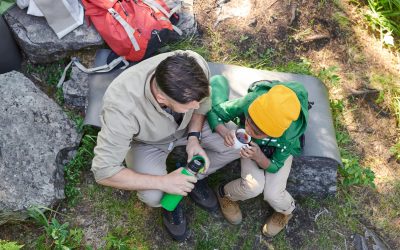
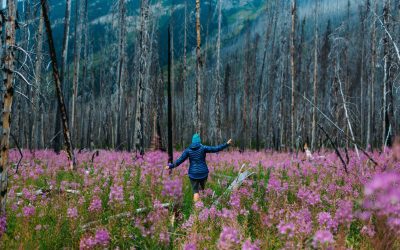
0 Comments